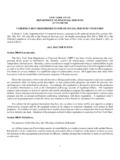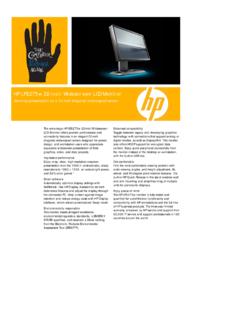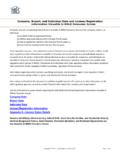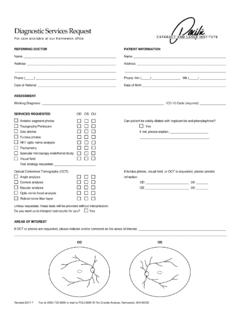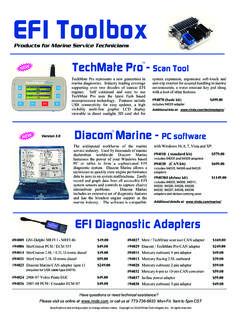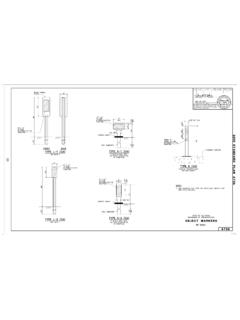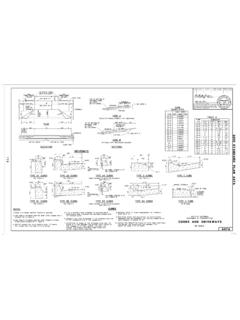Transcription of MRC Viewable Ad Impression Measurement …
1 MRC Viewable Ad Impression Measurement Guidelines Prepared in collaboration with IAB Emerging Innovations Task Force Version (Final) June 30, 2014. Introduction The Viewable Advertising Impression Measurement Guidelines document that follows is intended to provide guidance for the Measurement of Viewable impressions that supplements existing IAB Measurement Guidelines for display advertising and digital video advertising. The original IAB Guidelines may be found at the following links: IAB Ad Impression Measurement Guidelines: IAB Digital Video Ad Measurement Guidelines: Note regarding the applicability of these guidelines for mobile Viewable ad Impression Measurement : While these viewability guidelines are primarily designed for desktop browser-based advertising rather than mobile advertising, the following points should be noted.
2 1) measurers of viewability of mobile browser-based web ads are encouraged to consider these guidelines in measurements until such time as guidance specifically designed for the Measurement of viewability in mobile web based ads is created; and 2) as noted in the Mobile Application Advertising Measurement Guidelines issued by IAB, MMA and MRC in July 2013 ( ), ad impressions served in an in-application environment are currently generally assumed to be Viewable . Definitions Viewable Browser Space: Advertisements and content associated with each page load can appear either within or outside the Viewable space of the browser on a user's screen , that part of the page within the browser that a user can see.
3 This is similar to the concepts once referred to as Above the Fold ( , within the Viewable browser space) and Below the Fold ( , outside the Viewable browser space). The fold was traditionally considered to be where the initially-loaded Viewable space of the page ends so advertisements and content above the fold were considered likely to be Viewable upon load, and for content below the fold, it was considered necessary to scroll to in order for that content to be Viewable . In reality, the location of the fold, and consequently the Viewable status of advertising and content, is variable based on the browser settings of the user (resolution, font size, window size, etc.)
4 And there are generally four locations (top, bottom, left and right sides) where advertising and content may be cut-off from being Viewable based on user actions and settings. Upon initial page load, advertising or content placed at the top and left side of the page is most MRC Viewable Ad Impression Guidelines June 30, 2014 Version (Final) Page 2 likely to be Viewable , however this can change if content or ads are obscured by overlays or with further user action (scrolling) coupled with latency; therefore, placement and Viewable status are separate attributes to be assessed. I-Frames: The sections of a website/webpage that display ads served from a third party ad server that limits the access of that ad server solely to the code of the page.
5 I-Frames can be nested, essentially creating a chain of serving instances from serving partners. An I-Frame associated with a placement where the ad tag is located on an HTML document loaded from a domain other than the domain of the document on which the I-Frame was rendered is called a cross- domain I-Frame. Viewable Ad Impression : A served ad Impression can be classified as a Viewable Impression if the ad was contained in the Viewable space of the browser window, on an in-focus browser tab, based on pre-established criteria such as the percent of ad pixels within the Viewable space and the length of time the ad is in the Viewable space of the browser.
6 It is recognized that an opportunity to see . the ad exists with a Viewable ad Impression , which may or may not be the case with a served ad Impression . Invalid Impressions: Impressions that do not meet certain ad serving quality or completeness criteria, or otherwise do not represent legitimate ad impressions that should be included in Impression counts. Among the reasons why an ad Impression may be deemed invalid is it is a result of non-human traffic (spiders, bots, etc.), or activity designed to produce fraudulent impressions (see definition of Fraudulent Impressions). Fraudulent Impressions: Impressions that result from an intentionally deceptive practice designed to manipulate legitimate ad serving or Measurement processes or to create fictitious activity that leads to inflated counts.
7 All fraudulent impressions are invalid (but not all invalid impressions are fraudulent), and impressions known to be fraudulent can never be Viewable impressions. Some Viewable Impression measurers apply additional techniques to identify suspected fraudulent impressions subsequent to making a viewability determination about an ad, and account for these in their reported Impression counts. As used in these Guidelines, Fraud is not intended to represent fraud as defined in various laws, statutes and ordinances or as conventionally used in Court or other legal proceedings, but rather a custom definition strictly for advertising Measurement purposes.
8 General Requirements For counting of Viewable ad impressions, existing key concepts of served ad MRC Viewable Ad Impression Guidelines June 30, 2014 Version (Final) Page 3 Impression counting should be followed, as detailed in previously issued IAB. Measurement Guidelines. These include: Client Side Counting Filtration of Non-Human Activity and Invalid Activity Cache Busting Techniques Differentiate Significant Auto-Refresh versus Human-Initiated Activity Differentiate Impressions Served in Situations of Out-Of-Focus or Obstruction Disclosing Material Internal Traffic Full Disclosure by Publishers, Portals, Ad-Servers, Ad Networks and Exchanges o In the context of Viewable ad impressions, this principle of transparency of Measurement processes to data users should apply to all measurers of Viewable impressions, including 3rd party measurers.
9 Requirements for Viewable Display Advertising Impressions In addition to the above requirements, Viewable Display Ad Impressions are counted when the following criteria are met: Pixel Requirement: Greater than or equal to 50% of the pixels in the advertisement were on an in-focus browser tab on the Viewable space of the browser page, and Time Requirement: The time the pixel requirement is met was greater than or equal to one continuous second, post ad render. The above actions determining pixel requirement, determining time requirement should be performed in that specific order when measuring the viewability of an ad. In other words, satisfying the minimum pixel requirement should precede the Measurement of the time duration; for example, the clock starts on determining whether the ad meets the one continuous second time requirement only when the ad is determined to have met the 50% pixel threshold.
10 User Interaction Considerations: If the measurer is able to determine that there is a strong user interaction with the ad, then the ad may be counted as Viewable even if it does not meet the pixel and time criteria noted above. In this context, a legitimate click ( , it satisfies the requirements for counting a click, based on the IAB's Click Measurement Guidelines) would constitute a strong user interaction that would result in a Viewable Impression ; but a mouse-over alone generally would not be considered a user interaction with the ad that would serve as a proxy for viewability (Note: A click that initiates a Click to Play video ad would not, in itself, be considered a user interaction that satisfies this criteria).
